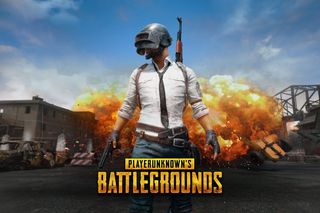
No One Is 100% Sure That Violent Video Games Lead to Aggression in Kids
Given the popularity of PlayerUnknown’s Battlegrounds (PUBG) and the ensuing moral panic, it’s a good time to delve into the research.

Another day, another digital threat to worry over. The video game, known as PlayerUnknown’s Battlegrounds, or PUBG for short, has quickly become the most popular video game in the world — including in India, where multiple metros have banned it out of concern that it fosters aggression in players. The Print reports that police in Western India have arrested 10 university students for playing the game, and newspaper editorials proclaim an epidemic that turns children who play PUBG into psychopaths.
“There are dangerous consequences to this game,” the Navbharat Times warned in a March 20 editorial, as reported by The Print. “Many children have lost their mental balance.”
It’s a tale as old as time — or at least as old as video games. Since their inception, virtual violence in video games, especially first-person shooter games like PUBG, has been held responsible for real-life aggression among their players.
But the evidence is mixed.
Related on The Swaddle:
How Much Screen Time Should a Teenager Have?
The body of research into the effects of video games on kids overwhelmingly points to a negative one — that violence in video games correlates to real-life aggression. The American Psychological Association, in a 2015 policy update, states an “association between violent video game use and both increases in aggressive behavior, aggressive affect, aggressive cognitions and decreases in prosocial behavior, empathy, and moral engagement.”
But that collective finding has been heavily criticized for collating individual studies with poor methodology and inconsistent findings, as well as for pandering to popular moral panic. In the same year, more than 230 academics wrote an open letter to the APA calling its conclusions “misleading.”
The conflicting evidence came head to head last year. “In a 2015 meta-analysis, I examined 101 studies on the subject,” Christopher J. Ferguson, PhD, an expert on the effects of video games and a professor of psychology at Stetson University, wrote for The Conversation last year, “and found that violent video games had little impact on kids’ aggression, mood, helping behavior or grades.” Rather, Ferguson went on to explain “spikes in violent video games’ popularity are well-known to correlate with substantial declines in youth violence – not increases. These correlations are very strong, stronger than most seen in behavioral research.”
It’s unclear whether that correlation is stronger than a more recent 2018 meta-analysis that linked violent video games to 0.08 percent of the variation in aggressive behavior among US teens and preteens. This statistic, known as an “effect size,” has been criticized for being so small as to be almost meaningless by Ferguson and compatriots.
Ultimately, “media violence is one risk factor for aggression,” said Douglas Gentile, a developmental psychologist at Iowa State University, in response to the 2018 reports of a link between virtual and actual violence. “It’s not the biggest, it’s also not the smallest, but it’s worth paying attention to.”
And that seems to be what everyone — from worried parents, to the APA, to the Navbharat Times, to the cities that have banned PUBG — is responding to: the potential effects of violent video games. But society has been responding to the potential for decades, with little to show for its efforts. Which suggests that rather than ban exposure to something not conclusively proven to be detrimental, we’d be better served in building children’s critical thinking, conflict resolution and empathy skills to provide a bulwark against the negative influences of these video games — if there indeed are any.
Related:
Liesl Goecker is The Swaddle's managing editor.
Related


All You Need to Know About Getting Tested For Sexually Transmitted Infections
